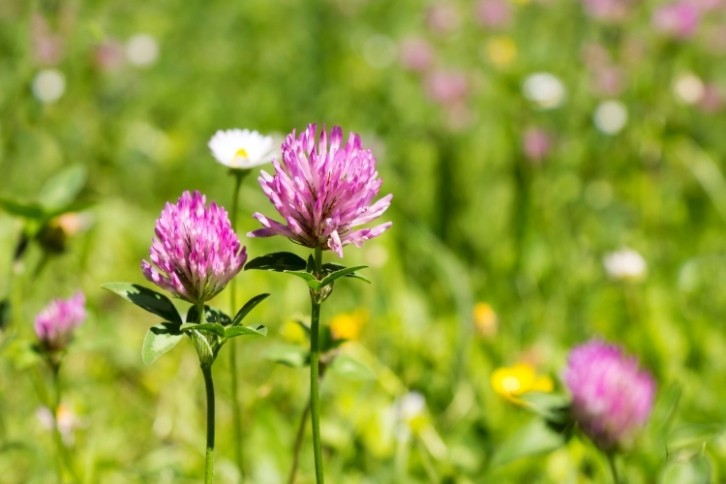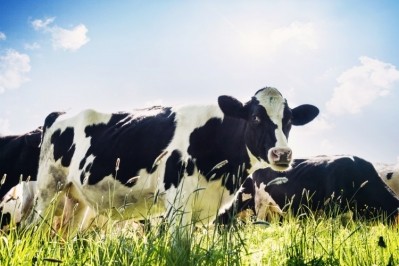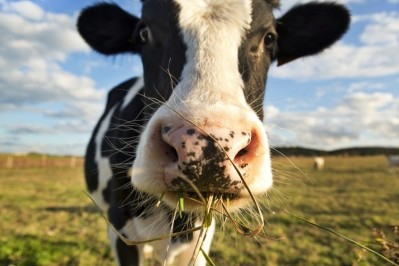Rare forage crop could solve dairy cows' $484m fertility problems

Fertility problems in dairy cows can cost as much as $484m per year in veterinary costs and milk production losses, according to the USDA National Animal Health Reporting system.
One reason for that are the levels of phytoestrogens in cow’s feed. These compounds are found in plants - such as red clover, a widespread pasture crop in New England, US - and their intake is associated with embryonic loss, poor semen quality, progesterone deficiency and inhibition of estrus1.
Recently, researchers from the New Hampshire Agricultural Experiment Station (NHAES) at the University of New Hampshire discovered that red clover produces higher levels of phytoestrogen as a defence mechanism against droughts.
Their study, published in the Journal of Agricultural and Food Chemistry, found that red clover – known scientifically as Trifolium pratense – produces twice as much phytoestrogen in drought conditions; the longer it was exposed, the greater the increase.
“Because the chemical structures of phytoestrogens are similar to those of mammalian estrogen, these phytoestrogens can bind to estrogen receptors in the same way that estrogen would,” explained Richard Smith, one of the authors. “If cows are ingesting an excessive amount of these phytoestrogens in their feed, then the biological effects would mimic those that would be observed from exposing cows to elevated levels of estrogen. However, this is an area that we don’t yet fully understand.”
Smith said the amount of phytoestrogen that cows consume would depend on a number of variables, including the levels and types of phytoestrogens in their feed, which will depend, in part, on the species of legume they are consuming. The composition of rumen microbes also likely plays a role.
“If red clover is only a small portion of their overall diet, then there may not be too much of an issue,” the Professor of Agricultural Ecology told us. “Interestingly, both white clover and alfalfa also produce phytoestrogens; however, their levels are relatively low when plants are healthy and seem only to increase to potentially problematic levels when they are infected by fungal pathogens. So, there are a lot of variables at play.”
A resilient forage crop called kura clover – also known as Caucasian clover – may offer an alternative to the phytoestrogen-producing red clover, the researcher have found.
Kura clover can grow in waterlogged areas, in low-nutrient soils and in variable climatic conditions, all whilst showing no increase in phytoestrogen content. The crop also persists longer in pastures than red clover.
But getting it to establish in pastures has had limited success according to Smith. “Kura clover is most likely to be successful in the northern half of the US, rather than in more southern locations. Kura clover is native to the Caucasus region of Eastern Europe, which is why it is also known as ‘Caucasian clover’. I suspect that in general, it would do well in conditions that are similar to its native range.” Meanwhile, the red clover seed is readily available, is easy to establish, and grows well, especially in the Northeast, we were told.
Kura clover can be grown in a greenhouse, however, though it’s questionable if there’s market potential for feed producers to tap into. “Folks in the Upper Midwest have been trying to grow the market for kura clover for a number of years now, with little success,” Smith said, referring us to a University of Minnesota trial from the early 1990s when researchers ran a program to study the crop’s use in the Midwest grazing system.
But all these years later, its adoption is far from widespread, with seed availability, cost and poor establishment being the key limiting factors.
From a research perspective, a more viable option would be to continue studying the effects of red clover’s phytoestrogen levels on the fertility of grazing livestock.
“Our data suggest that phytoestrogen levels in red clover can roughly double during drought conditions,” Smith added. “We don’t know enough about their effects on cows to make a definitive conclusion about how that would affect their reproductive health. This is an active area of research.
“The levels we are seeing would likely pose problems for sheep, however, but only if red clover was their primary or sole source of feed.”
As for the role of feed processing on the levels of phytoestrogen in forage crops, Smith said this is also an active area of research. “Some of our own research, as well as research from others, has shown that processing can influence phytoestrogen levels in red clover.
“Levels can depend on the maturity of the plant, as well has how that material is then processed.
“For example, in general, wilting appears to decrease phytoestrogen concentrations in red clover somewhat, while ensiling red clover can lead to increases in phytoestrogen levels depending on whether additives are used in the process,” Smith concluded.
Source:
Water Stress Influences Phytoestrogen Levels in Red Clover (Trifolium pratense) but Not Kura Clover (T. ambiguum)
Authors: Richard G. Smith, et al.
Published: Journal of Agricultural and Food Chemistry, Volume 72, Issue 18
DOI: 10.1021/acs.jafc.4c00300














